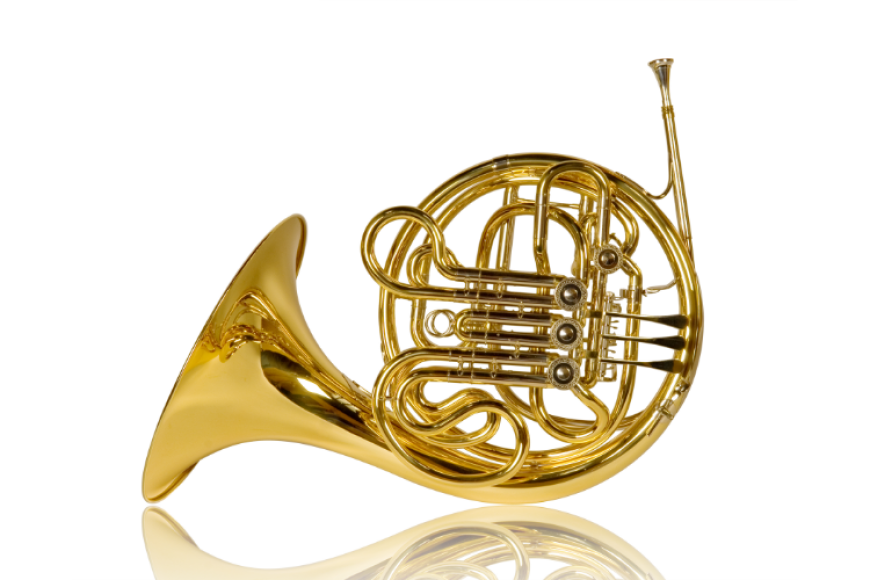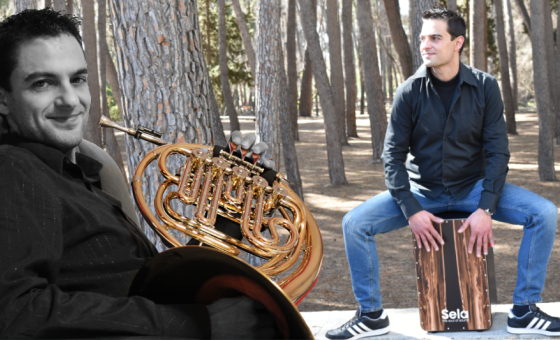French Horn Types: How to Choose the Right Model

When a student begins learning the French horn and decides to acquire their first instrument, they are often confused and overwhelmed by the large number of existing models. It is normal that doubts arise about which model to choose or which one will meet the student’s expectations, especially considering the possibility that it is an instrument they will use for their entire musical career.
In the following article, the most common types of horns will be analyzed (natural horn, junior horn, single horn, double horn, compensating horn, triple horn or marching horn), leaving aside the different manufacturers and brands, as this last aspect is very personal and depends in turn on the budget available to the future horn player.
First of all, we must analyze the two keys that the instrument uses, which are F and B-flat. This is going to be an important aspect that will help us understand the operation of the various horn models. It should be noted that, although the tonality of the instrument used is mostly F, it depends on the cultural tradition and the different Schools established during history in different countries. For this reason, it is common in certain countries for students to begin their training with a horn tuned in F, while in other countries the introduction to the instrument tuned in B-flat predominates. The difference in key affects the range, fingering, and indirectly, the weight of the instrument.
Below is a list of the common horn types, along with a brief description of their characteristics.
• Natural Horn
Used in the 17th and 18th centuries, this instrument is sometimes used today for the performance of early music on period instruments. The different notes are produced using hand techniques, along with the harmonics of the instrument. The tonalities of this instrument are modified by the valves (additional tubes that lengthen or shorten the total length of the instrument).
• Single Horn
This horn has only one valve per rotor, each offering only a single tone. This limits the range that the instrument can reach (fewer sounds compared to other horn models). However, it is a less expensive and lighter instrument than options such as the double or triple horn.
• Junior French Horn
This is a single horn model (available in F or B-flat) with reduced dimensions and weight. It is ideal for beginning students and for all students who are not very large.
• Double Horn
This model has two valves per rotor, which gives us the option to quickly change the key from F to B-flat, depending on the playing needs of the horn player. It is like having two single horns (one in F and the other in B-flat) on the same instrument, thereby increasing the range of the instrument. Currently it is the most commonly used type of horn by advanced students and professional musicians. On the contrary, the number of valves increases the weight and dimensions of the instrument.
• Triple Horn
The operation is the same as the double horn, only in this case the horn has three valves per rotor. This makes it possible for the horn player to quickly switch through the keys F / B-flat / high F. In this case it is like having three single horns in one. The sonic possibilities of the instrument and the tessitura are considerably increased. On the contrary, it is a very heavy instrument compared to other lighter options.
• Compensating Horn
The compensating horn is a model that is halfway between a single horn and a double horn. It offers us the possibility of playing almost the same range of sounds of a double horn, but with the dimensions and weight of a single horn. This is accomplished by an extra tube that provides some of the harmonics of the F tone.
• Marching Horn
Similar in appearance to a trumpet with the bell facing forward (unlike the rest of the horns with the bell directing the sound behind the musician), the design of this horn model facilitates the projection of sound in open spaces. It is used mainly in marching bands, although it is also common to use it in certain styles of music, such as jazz.
In summary, due to the wide variety of types, models, brands, and materials, students should seek the advice of their teacher when choosing a horn. Good options for beginning students would be the single horn or the compensating horn. It is very common to see amateur musicians playing double and triple horns but actually using only one part of the horn. Beginners and amateurs could easily play the same music with a lightweight and economical horn, allowing them greater ease and enjoyment in their playing.
 |
ABOUT JOSÉ
José Carlos Vidal Ramírez is a Spanish conductor, percussionist, French horn player and music teacher from Valencia. He began his musical studies at the age of six. Although his musical training focused on classical music, he has always been interested in other musical styles such as jazz, flamenco or Latin music. After finishing his studies for horn at the Superior Conservatory of Music of Valencia, he entered the world of conducting and performance of hand percussion instruments (e. g. cajon, bongos, etc.). His constant interest in the latest developments in music has led him to attend advanced courses at institutes such as the Polytechnic University of Valencia and the Rey Juan Carlos University in Madrid. |




